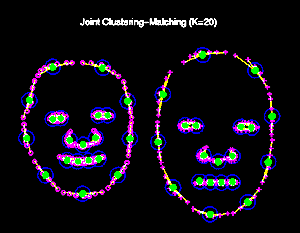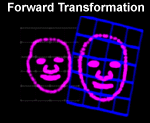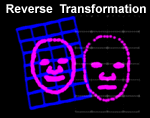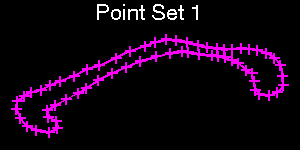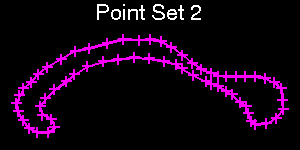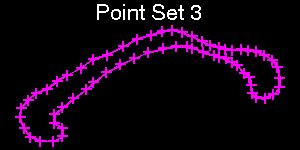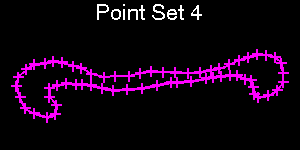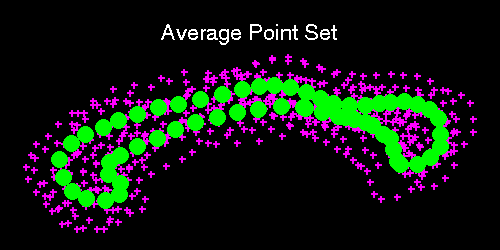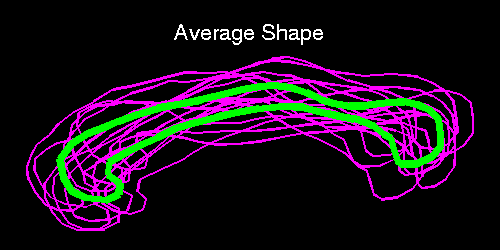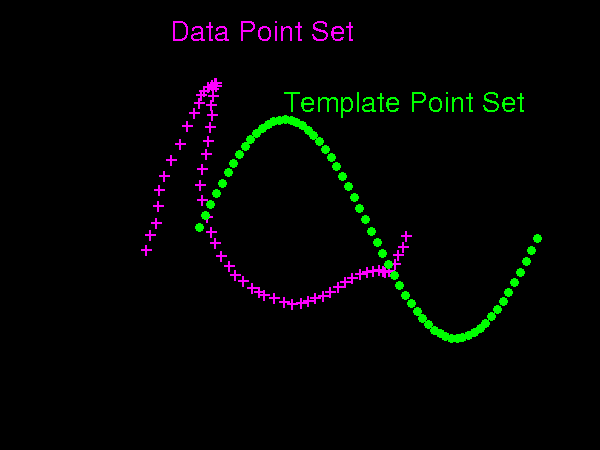
Two point sets are shown here. We attempt to align these two point sets by deforming one set (template) onto the other set (data). Note that the correspondence between the two point sets is also unknown. We are solving for both the deformation and the correspondence together.
See the matching process of our algorithm.
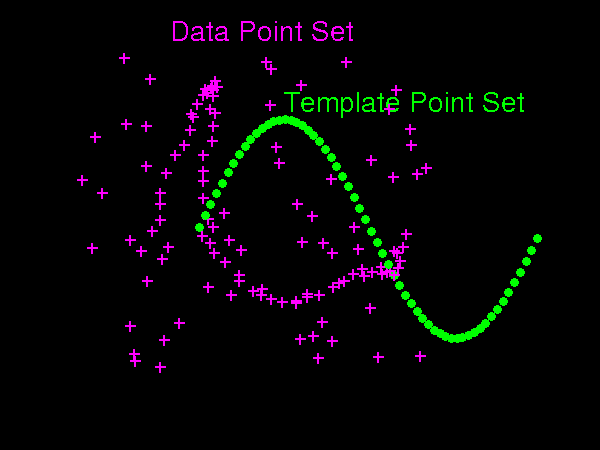
Data points can be corrupted with noise and outliers. In order for the matching to be successful, the algorithm needs to "recognize" the outliers and reject them.
See the matching process of our algorithm.
Care to know more about non-rigid point matching? More details/demos here.
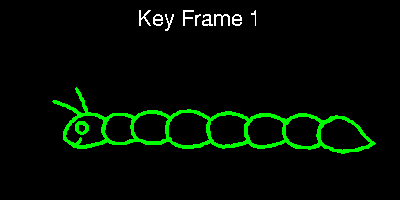
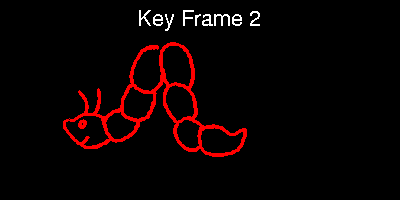
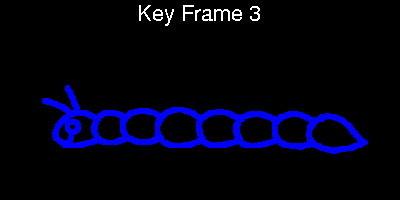
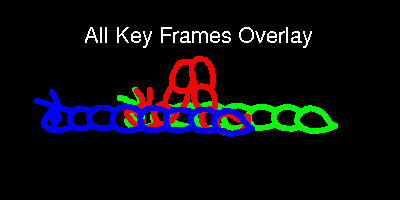
Three key frames are shown. We represent the object in each frame, which is a crawling caterpillar in this case, by points. Then we solve the point matching problem to find the non-rigid deformations between frames.
See the estimated deformation between frame 1 and 2.
A simple linear interpolation is then used to generate all the intermediate frames. These intermediate frames can form a full animated sequence.
See the animated sequence.
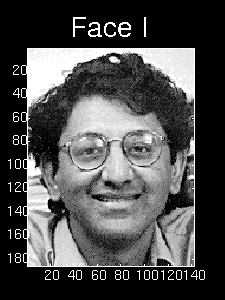
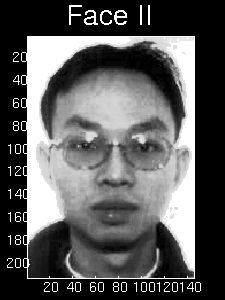
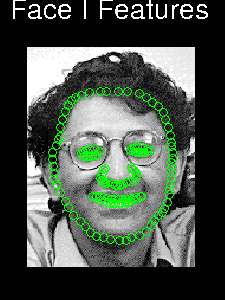
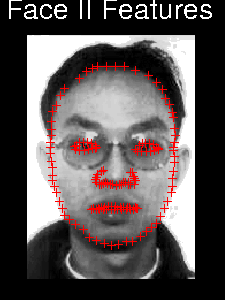
Two faces and their feature points are shown as an example. Through the matching of the two feature point sets, we can find the deformation that can warp the shape of one person's face to be the same as the other. Note that the points in the two sets do have to be exactly corresponding to each other.
See the estimated deformation.
See the warping of the face image.
You may have noticed the interesting fact that the averaged face looks similar to both face I and II after the correct warping is applied.
The animation of human figure motion or facial expressions certainly requires the modelling of complex non-rigid deformations. From the keyfram animation example and this face matching example, there is certainly potential of utilizing the non-rigid point matching algorithm further for such sophisticated animations.
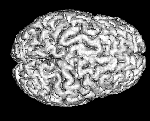
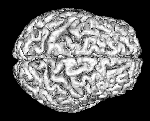
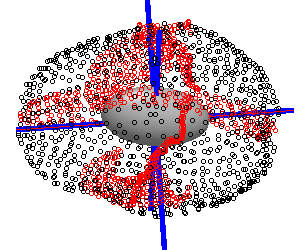
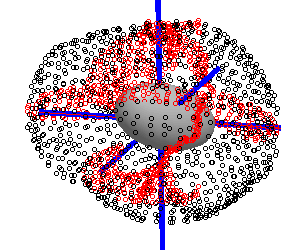
Non-rigid alignment of brain images (e.g. MRI) are required for quantitative analysis. We have chosen a number of major brain structures as the feature surfaces (outer cortex) and feature ribbons (major sulci). Points are sampled from these surfaces/ribbons to form the feature point set. Then the appropriate deformation is found through point matching.
See the 3D feature point set for brain 1.
See the 3D feature point set for brain 2.
For visulization, only two ribbons (left/right central sulcus) are shown.
See the warping.
This example also serves as an example of 3D non-rigid point matching.
